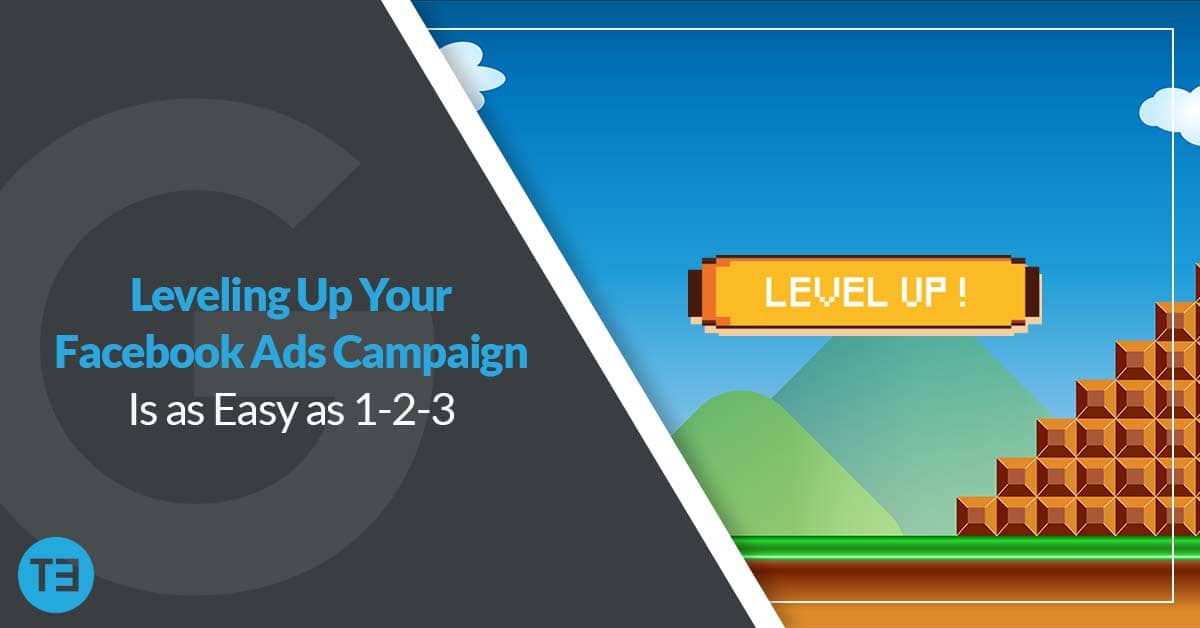How Do I Optimize My Facebook Ads?
13 Minute Read
The Facebook Audience Network might be the most powerful digital ad exchange on the planet. No other platform delivers more robust options for targeting your audience online and delivering ads that drive attention, clicks, and conversions.
It should come as no surprise, then, that the Facebook ads space is highly competitive. Advertisers who fail to craft their campaigns with care are likely to see high ad costs and limited ROI.
Optimization is essential for creating Facebook ads that work. At Twelve Three Media, our Digital Advertising Experts build every campaign according to three key pillars:
1. Plan
2. Target
3. Validate
Encompassed in each of these steps are a number of actions you can take to maximize the ROI on your Facebook ads.
NOTE: Yes, Facebook has changed its name to Meta, and many of the company’s online products, help pages, and other resources have been renamed accordingly. However, the rebrand has been roundly vilified, and the majority of advertisers want to stand out on Facebook, not whatever is encompassed in the amorphous entity now known as Meta. Just know that when we talk about optimizing your Facebook ads in this blog post, we are also talking about effective advertising on Meta.
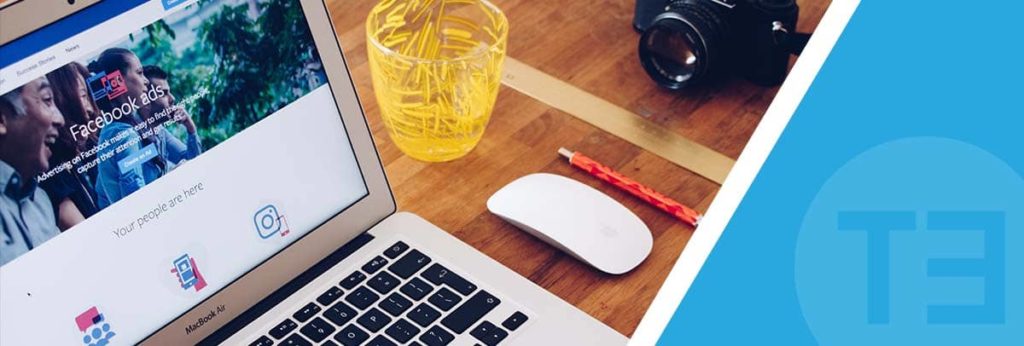
Planning a Successful Facebook Ad Campaign
Optimizing your Facebook ads starts with having a solid plan in place. You need to know your goals, what users you want to target, what imagery and messaging will connect with your customers, and where your ads should run. It is also important to determine how much you are willing and able to spend on Facebook ads.
Furthermore, you will need to take some preliminary steps to facilitate better targeting and validation of your Facebook ad campaigns down the road:
1. Set Up the Facebook Pixel
If you are pointing users to your business website, you need to make sure Facebook can track the actions they take. To do this, you will need to create a Facebook Pixel (or a “Meta Pixel,” as it is now known) and install it on your website.
A Pixel is a bit of code that tracks how users interact with a website. Follow these steps for setting up a Meta Pixel and installing it on your website.
Business owners and in-house marketers may find it difficult to add the Facebook Pixel on their own. If this is the case, you might want to consider working with a knowledgeable Web Developer who can assist you with the technical aspects.
2. Select the Right Objective
One of the key components of planning a Facebook ad campaign is to drill down on what you want to achieve. Do you want more customers to be aware of your business? Are you trying to drive traffic to your website? Do you want more leads?
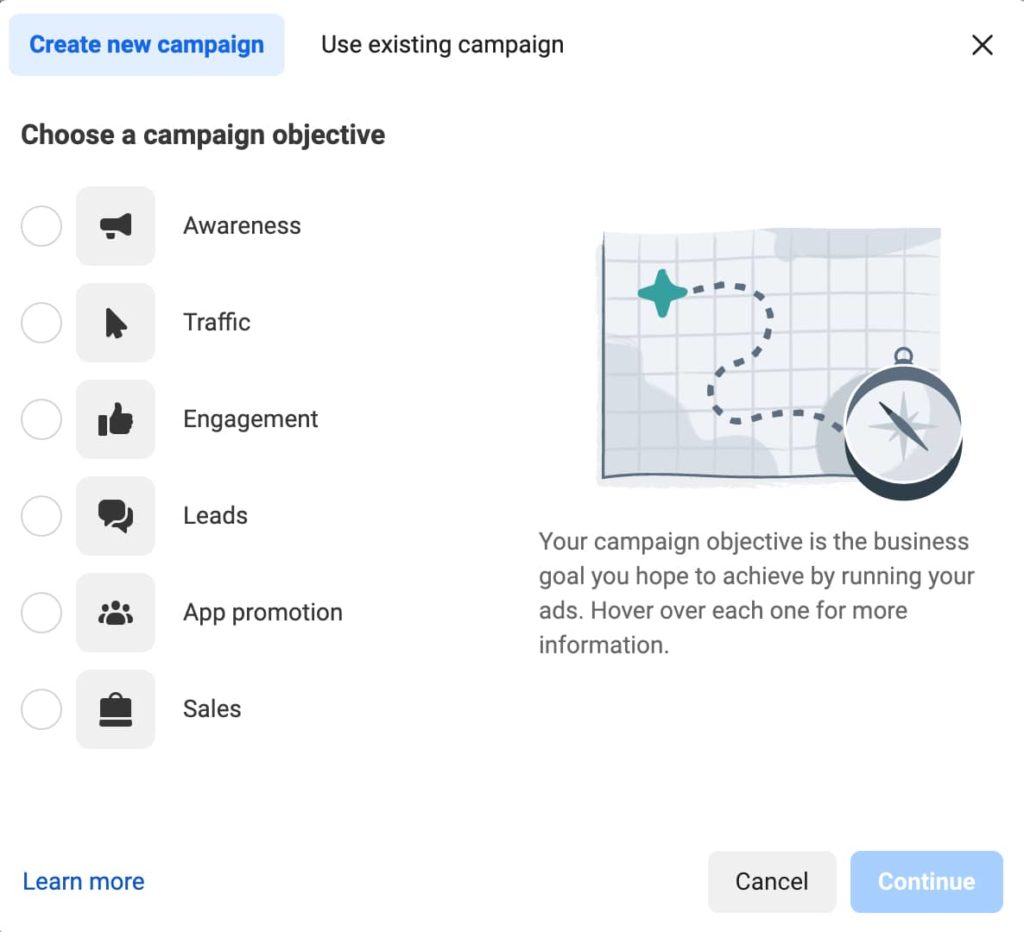
Clarity of purpose is key for planning effective Facebook ads. This is especially true considering the many objectives Facebook ad campaigns can support:
- Brand Awareness: Brand awareness ads enhance the visibility of your business and the products and services you offer.
- Reach: Increasing your reach means serving your ads to as many people in your target audience as possible.
- Traffic: Facebook ads can point to your website home page, a specific product or service page, a blog post, etc. The goal is to boost the number of visitors to a particular online destination.
- Engagement: The goal of an engagement ad is to drive likes, shares, comments, etc.
- App Installs: As with traffic ads, the app install objective points users to a destination where they can download your business app.
- Video Views: Have you invested in high-quality video marketing? The video views object is the right Facebook ad campaign for you.
- Lead Generation: Leads are people who are interested in your product or service. A lead generation ad drives calls, form fills, and other actions.
- Messages: Platforms such as Messenger, Instagram, and WhatsApp are all owned by Meta. Messages ads allow you to connect with new customers as well as existing ones on these popular platforms.
- Conversions: A conversion could consist of someone making a purchase on your website, calling to schedule an appointment, and more. Facebook ads can help drive more of the conversions you need to grow your business.
- Catalog Sales: If you choose the catalog sales objective, you can display products in your ads and connect customers to your eCommerce store.
- Store Traffic: Geotargeting ads allow you to reach people in the vicinity of a particular location (such as your store or office) and promote your products and services to people nearby.
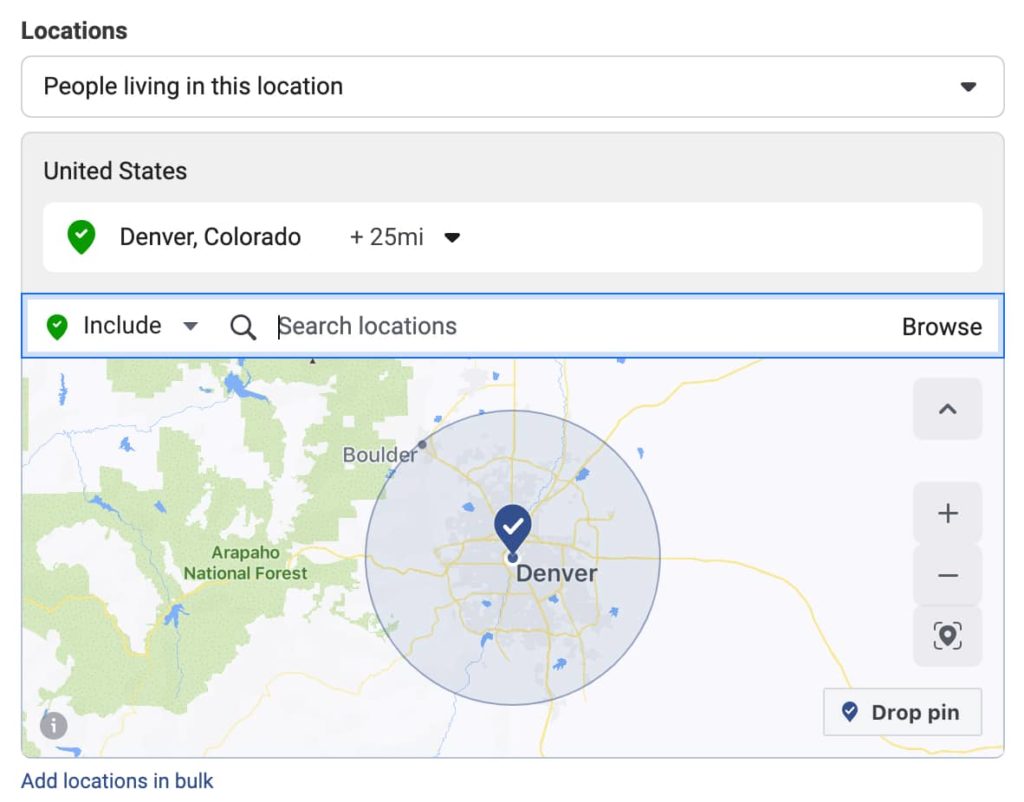
Choosing the wrong objective wastes money and time. To truly optimize your Facebook ads, you need to take time upfront to determine what you want to achieve and how Facebook can help you reach your goals.
3. Choose the Right Type of Ad
Facebook offers multiple formats for ads. The type of ad you want to run should be guided by the objective you choose, as well as the audience you’re trying to reach.
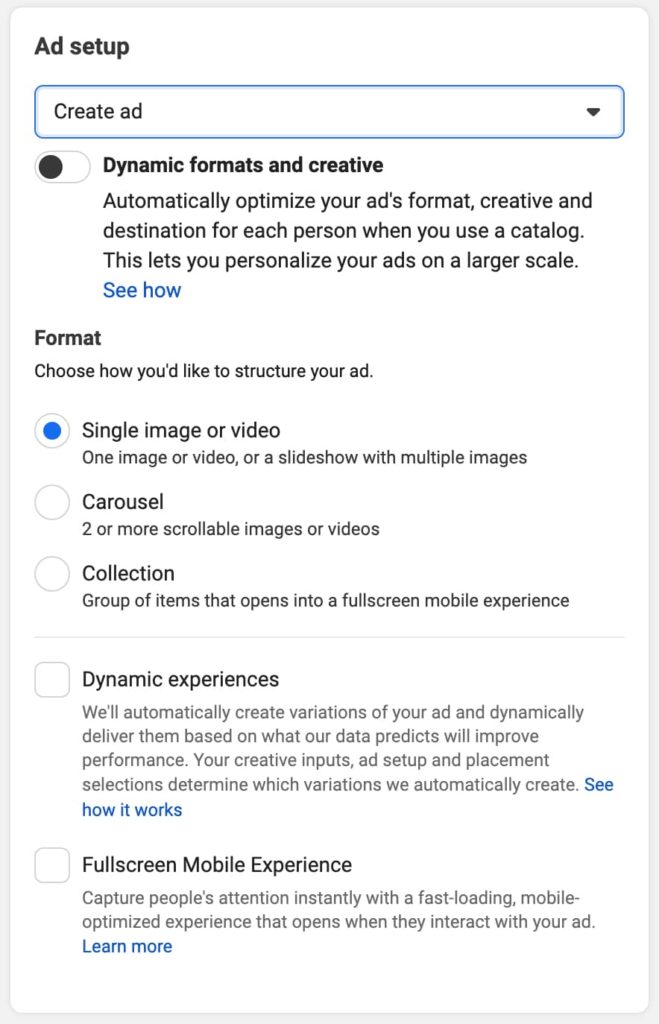
You can choose from the following types of Facebook ads:
- Image Ads: Facebook image ads appear in a user’s newsfeed. They are designed to look like organic posts.
- Video Ads: Video ads also appear in the user’s newsfeed. The use of movement makes video ads more captivating, but it is generally best to use videos of shorter length (especially on mobile).
- Carousel Ads: A carousel ad displays up to 10 images users can scroll through. These ads are a great way to showcase multiple products or services and point users to different online destinations to learn more and take action.
- Instant Experience Ads: Instant Experience ads are only available on mobile. When users click your ad, the experience goes full screen with multiple forms of creative, including images and videos.
- Collection Ads: A collection ad uses the Instant Experience format to let customers browse different products and services.
You may be able to use existing creative assets and even recent Facebook posts to develop an engaging ad. If you do not have these pieces in place, you will need to spend time on your social media marketing.
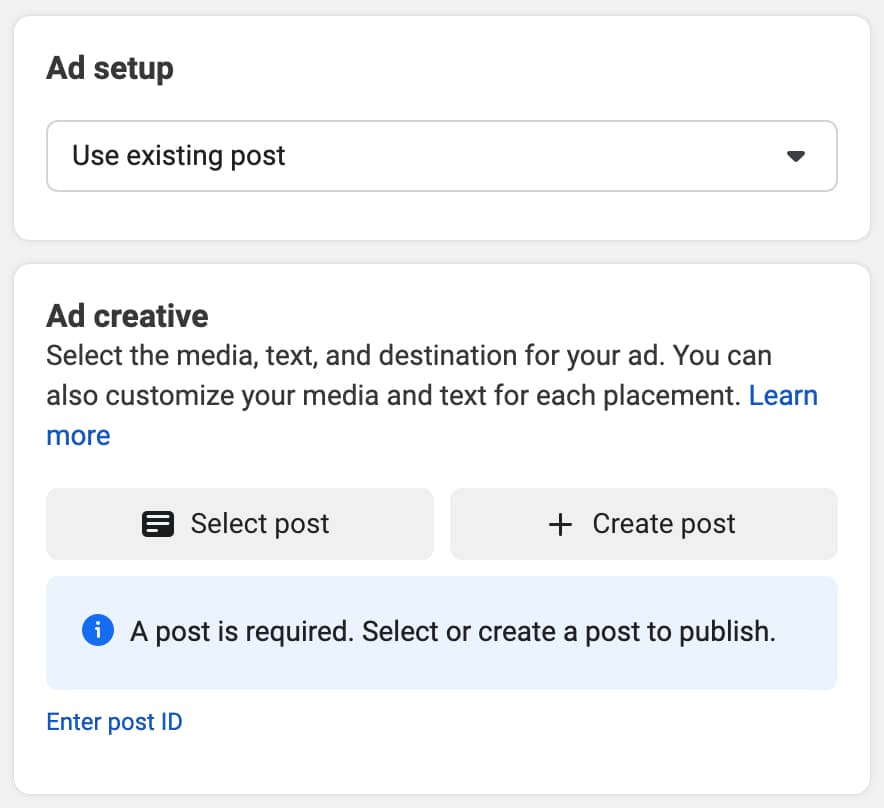
Optimizing your Facebook ads means choosing the right kind of ad format. You need to think through what you want to say, how you want to say it, and who your audience is to determine what kind of format will help you obtain the best results.
4. Pay Close Attention to Optimization for Ad Delivery
After choosing an objective for your Facebook ads, you will see a field labeled Optimization for Ad Delivery. That’s right, advertisers have the ability to tell Facebook what their desired results are, which should help Facebook serve ads more accurately.
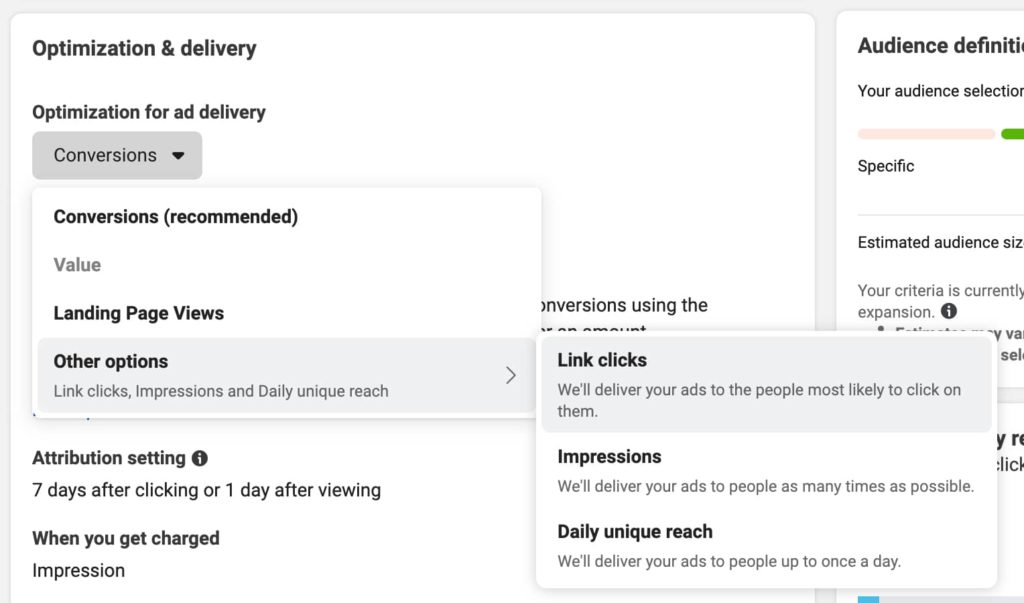
Unfortunately, many advertisers and businesses ignore this field. Doing so is a costly mistake, as it can lead to a disconnect between the results of your Facebook ad campaign and your goals.
Facebook provides the following Optimization for Ad Delivery options for each campaign objective:
- Brand Awareness
- Ad Recall Lift
- Reach
- Impressions
- Reach
- Traffic
- Daily Unique Reach
- Impressions
- Landing Page Views
- Link Clicks
- Engagement
- Daily Unique Reach
- Event Responses
- Impressions
- Page Likes
- Post Engagement
- App Installs
- App Events
- App Installs
- Link Clicks
- Value
- Video Views
- 2-second continuous video views
- ThruPlay
- Lead Generation
- Conversion Leads
- Leads
- Messages
- Conversations
- Leads
- Link Clicks
- Conversions
- Conversions
- Landing Page Views
- Other options:
- Daily Unique Reach
- Impressions
- Link Clicks
- Catalog Sales
- Conversion Events
- Impressions
- Link Clicks
- Value
- Store Traffic
- Daily Unique Reach
- Store Visit
The Optimization for Ad Delivery plays a major role in determining who is served your Facebook ads. Although Facebook Ads Manager displays brief descriptions of each optimization option, it may be helpful to peruse the options in greater detail before making a selection.
5. Create a Facebook Standard Event
Facebook events track the actions users take when they are on your website. Both standard and custom events are recorded via the Meta Pixel.
Generally, standard events are sufficient for collecting data on your Facebook ad campaigns. A standard event collects data according to the predefined objectives and goals supported by Meta. Custom events are more advanced and tend to involve goals beyond what the average advertiser would need to track.
If you fail to set up events, critical campaign data will be lost. This results in diminishing returns on your ad spend.
You may need to work with a web developer to create Facebook events and set them up on your website. Taking this step is essential for optimizing the performance of your Facebook ads.
6. Set Up Facebook’s Conversions API
Who doesn’t have an ad blocker these days? Although an ad-free experience may be great for users, it’s a nightmare for businesses!
So how can your business circumnavigate ad blockers? You need to go straight to the server.
The server hosting your website records what users do when they are on your site. From the pages they visit to the links they click to the forms they fill out, the server sees it all. Users who install ad blockers prevent their data from being seen by the Meta Pixel and other online trackers, but these programs do not affect the information recorded by the server.
You need to set up a Conversions API to fill in the data gaps from users with ad blockers. The Conversions API (short for application programming interface) allows for the exchange of data between your website server and Meta.
Without the Conversions API, you will have an incomplete picture of the actions users take when they visit your website from Facebook ads. Optimal ad performance relies on complete data, so allowing Meta to receive information from your server is essential for accurately assessing how your audience interacts with your website.
Once again, it will likely be necessary for most businesses to consult a web developer for help creating and implementing a Conversions API.
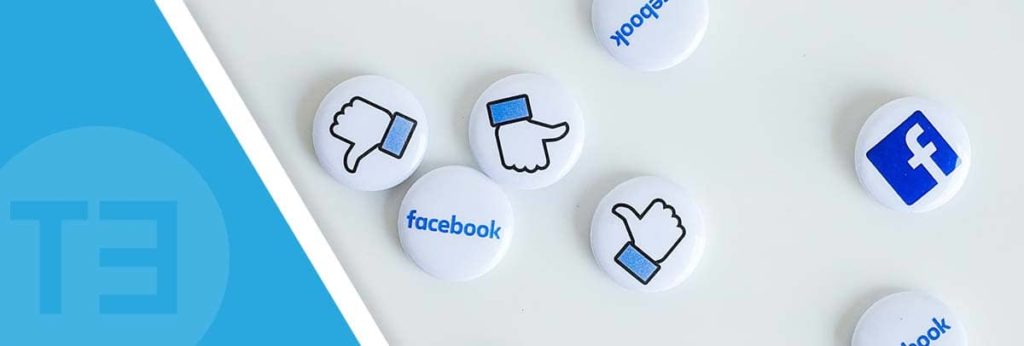
Targeting Your Facebook Ads
So far we’ve talked about how advertisers can avoid poor planning when creating a Facebook ad campaign. Another key component of getting the most out of your Facebook ads is ensuring that your ads are served to the right people in the right area(s).
When you first set up a campaign in Facebook Ads Manager, the default option is to target everyone in a specific location. To get the best results from your Facebook ads, however, you need to use parameters to target specific types of users:
7. Define Your Audience
This step overlaps significantly with the planning phase. No marketing or advertising strategy can succeed if the business doesn’t have a firm grasp on who the target customer is. Before you set up Facebook ads, then, you need to identify your audience.
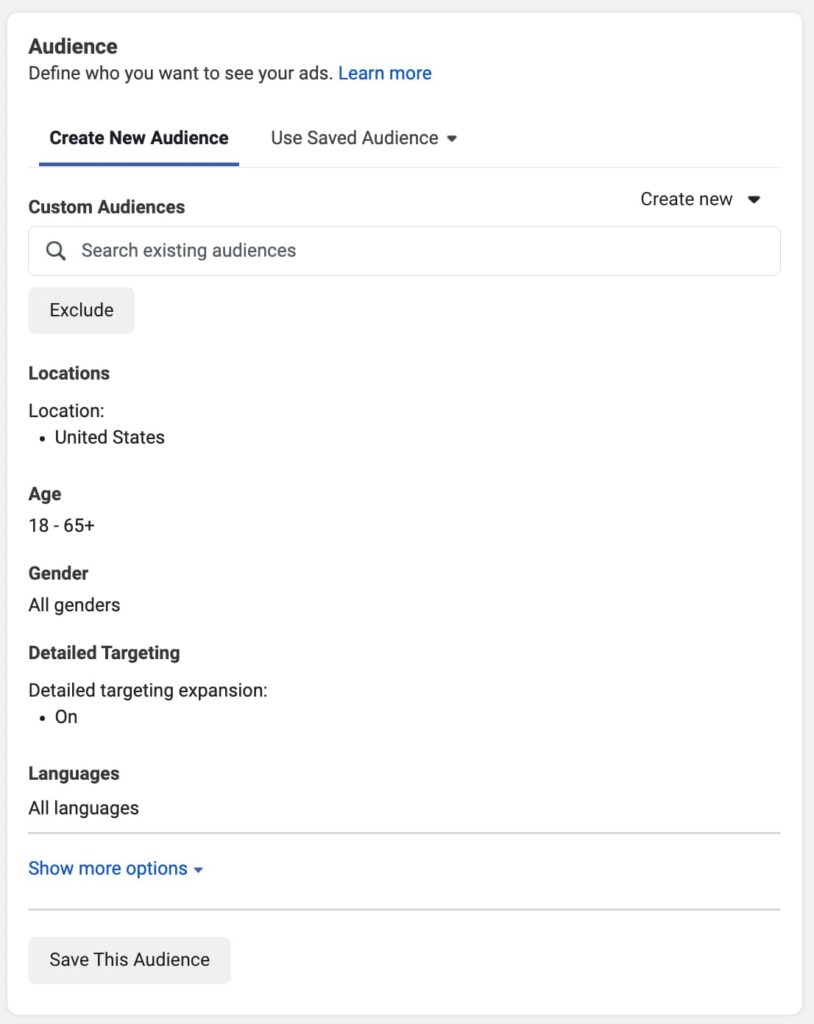
One of the biggest strengths of Facebook advertising is the number of different ad targeting options:
- Location: Target users in a particular city, region, or country
- Demographics: Target users by characteristics such as age, gender, career, education, etc.
- Interests: You can leverage the interests people identify on their Facebook profiles to reach audiences who may be interested in your products and services
- Behavior: Target users based on what they do online, such as buying from your online store, the websites they visit, the devices they use, etc.
- Connections: Target users who like your Facebook Page (or exclude those who already like and follow you in an effort to attract new customers)
You can also create custom audiences for your Facebook ads:
- Contact lists: Target customers who subscribe to your newsletter or whose information you have on file
- Site visitors: With a retargeting/remarketing campaign, you can serve ads across the Meta Audience Network to users who have visited your website
- App users: Developers can create ads served to consumers in the apps they use
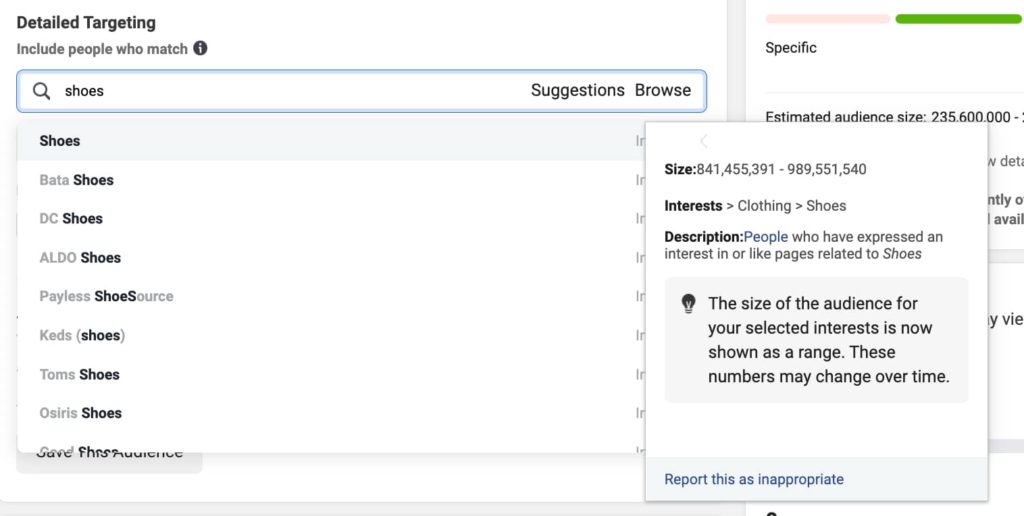
Facebook’s ad targeting options allow you to reach audiences large, small, and in between. Although it may be tempting to rely on defaults, it is worth taking the time to hone in on who your potential customers are and segment your audience for maximum effect.
8. Create Lookalike Audiences
A lookalike audience is a way to expand the reach of your Facebook ads by targeting users similar to your established customers. Facebook provides multiple options for creating lookalike audiences, including data from the Meta Pixel, drawing from your customer database, etc.
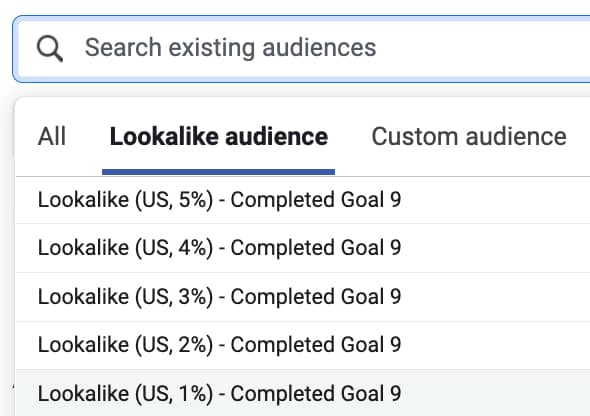
The principal advantage of lookalike audiences is that Facebook will develop the audience for you. If your data is detailed and complete, Facebook should be able to create a lookalike audience of customers with demographics, interests, and other traits that are very similar to the customers you already have.
A lookalike audience should respond to the same kinds of ads as your current customers. This will enable you to save time on messaging, creative, and Facebook ad campaign setup.
9. Avoid Audience Overlap
Facebook ads are powered by robust targeting. Unfortunately, advertisers who go too broad run the risk of creating ads with overlapping audiences. This wastes your precious advertising budget, so it is essential to avoid overlap whenever possible.
If you’re not careful, you might end up running ads against the same two groups of people. For example, a hardware store that runs one campaign targeting people who like tools and a separate campaign for people who like stock car racing are likely to see significant overlap. Each campaign might reach some people who fall into one category and not the other, but you don’t want to waste money bidding on two audiences that are ostensibly the same.
Instead, you want to target a crossover audience (i.e., the consumers occupying the center of a theoretical Venn diagram). Facebook can actually help visualize this for you with its Show Audience Overlap feature.
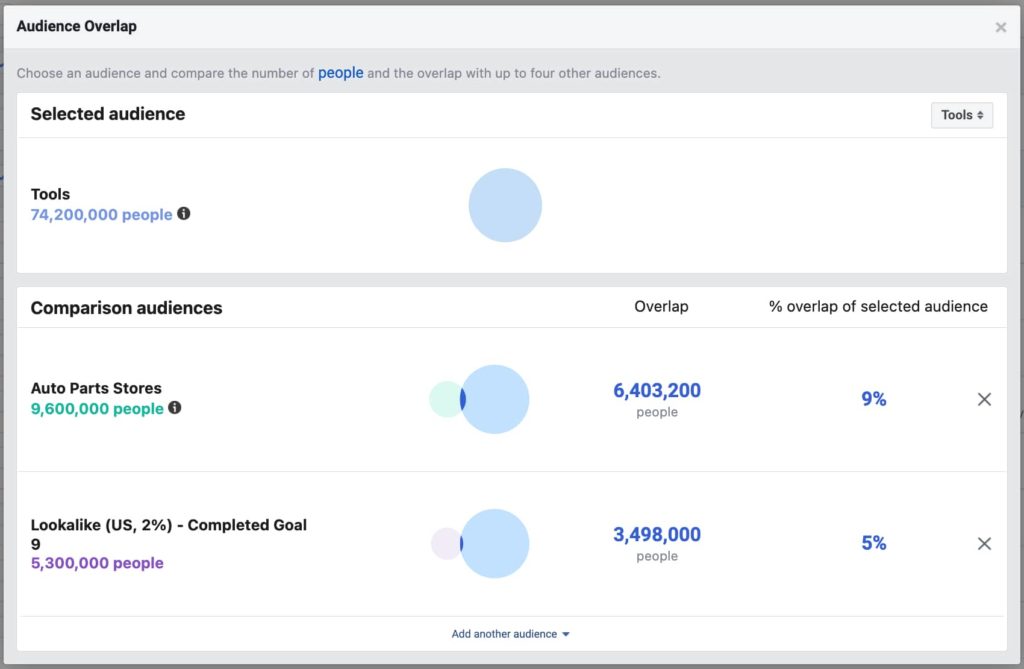
By comparing audiences, you will know who is being served your ads and where there might be overlap. These insights can help you avoid duplicating your efforts across Facebook ad campaigns, as well as save money trying to reach the same people through multiple ads.

Validating Results for Your Facebook Ads
When you run a Facebook ad campaign, you can’t set it and forget it. You need to pay attention to performance to ensure that the ads are helping you reach your goals and keep your ad spend in check.
Facebook uses algorithms to determine what ads are best served to which users. If you don’t get a base set of 50 conversions (at minimum) in the first week you run an ad, your data will be flawed. This can skew the delivery of your ads.
It is crucial to validate the results from your Facebook ads and take the time to adjust your campaigns as needed. These steps can help you evaluate whether or not your Facebook ads are working the way they should and how you can optimize them for better performance:
10. Watch Ad Frequency
One of the most important metrics to monitor in any Facebook campaign is ad frequency. Frequency measures the average number of times a user sees your ad.
According to Meta, “Frequency helps to build awareness and recall by showing your message to people in your target audience multiple times.” Repeat exposure is key for driving results, as users may need to see your ad multiple times before they feel compelled to take action.

However, it is important not to overwhelm the audience with the same ads. Too much frequency can lead to fatigue and, in turn, poor results.
11. Make Sure Your Ad Is Relevant
Today’s consumers are inundated with ads. Facebook gives users the option to mark irrelevant ads so they don’t see them anymore. If your ads are routinely ignored or, worse, marked “not relevant,” you will not be able to achieve your Facebook advertising goals.
You can assess the relevance of ads to your target audience with Facebook’s ad relevance diagnostics tool. Ad relevance diagnostics will determine how relevant your ads are according to the following metrics:
- Quality Ranking: Compares the perceived quality of your ads against those of competitors based on user feedback and low-quality attributes
- Engagement Ranking: Assesses the expected engagement rate of your ads against the performance of other, similar ads geared toward the same audience
- Conversion Rate Ranking: Compares how well your ad is expected to perform in terms of reaching a target goal against ads with the same goal
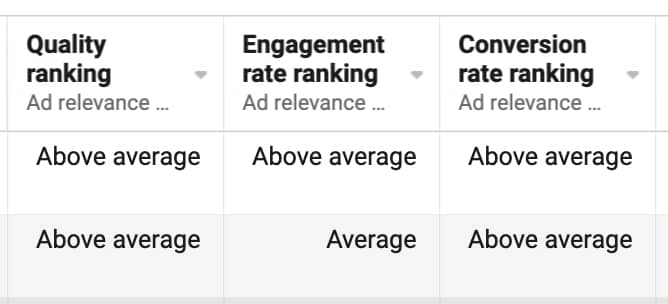
Advertisers accustomed to traditional media planning and media buying don’t have the opportunity to get this kind of feedback from an ad exchange. To optimize your Facebook ads, it is well worth paying attention to how relevant your ads are to the customers you are trying to attract.
12. Mind Your Metrics
Whether you handle the ads yourself or entrust your Facebook marketing and advertising to an agency, the results of the campaign tell the full story of whether your Facebook ads are truly optimized for success. Naturally, the results metric is the place to go in Facebook Ads Manager to determine if your ads are working properly or not.
To get a complete overview of your results, you will need to have accurate conversion data. Revisit the Planning section above for information on setting up:
- The Facebook/Meta Pixel
- Facebook standard or custom events
- Conversions API
For good measure and/or to supplement the data, you can also set up events in Google Analytics to track the results of your Facebook ad campaigns. Ultimately, the more information you can access via analytics and reporting tools, the more insights you will have to optimize the performance of your ads.
Your results report will tell you how well your Facebook ads perform based on your objectives. For example, if you are running a traffic campaign and your click-through rate is below 5%, you are not getting good results.
It requires awareness, ingenuity, and even a bit of soul-searching to extrapolate a why from the what provided to you by the Facebook results metric. Maybe your creative sucks and isn’t driving clicks. Perhaps you’re targeting the wrong audience.
Ultimately, Facebook results reporting is a tool that can help you understand why your ads may be underperforming. Take a hard look at what you’re doing and you may be able to change course by selecting the right objective to serve the right ads to the right people and get them to take the action that is right for your business.

Facebook Ads Struggling? Twelve Three Media Can Help!
As you can see, Facebook advertising is complicated. Many small and medium-sized businesses make the mistake of relying on default settings. When it comes time to assess the results, these advertisers are typically left scratching their heads and wondering where the engagement, leads, and new business are.
Planning, targeting, and validating your results are imperative for successful Facebook ads. It is important to take the necessary steps upfront to maximize reach, encourage users to take the actions you need to support your business goals, and maintain your budget.
